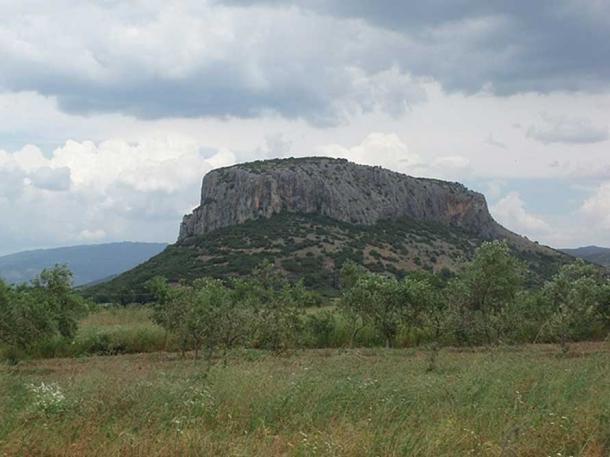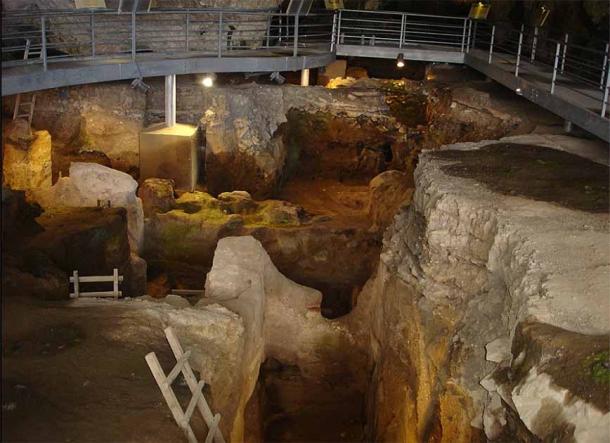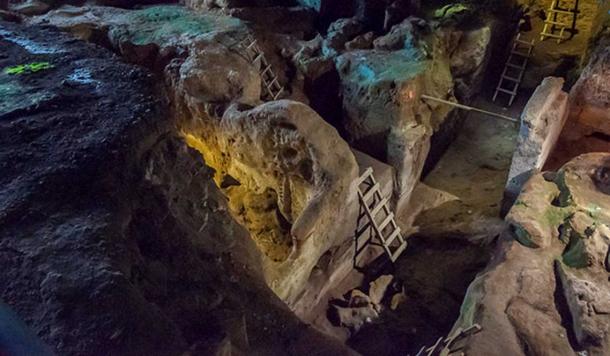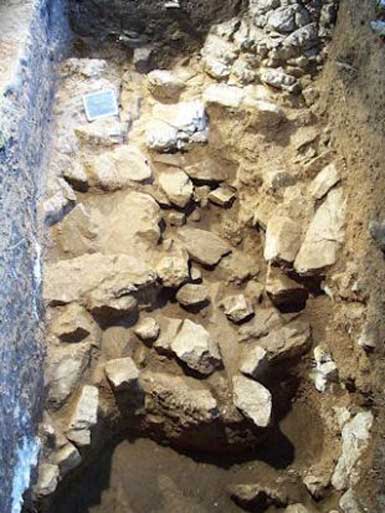
Theopetra Cave is an archaeological site located in Meteora, in the Thessaly region of central Greece. Through archaeological excavations conducted over many years, it was revealed that Theopetra Cave was occupied by humans about 130,000 years ago. Furthermore, evidence of human habitation in Theopetra Cave can be traced continuously from the Middle Paleolithic to the Late Neolithic. This is important because it allows archaeologists to better understand prehistoric times in Greece.

The occupation of Theopetra Cave
Theopetra Cave is located on the northeast slope of a limestone hill, about 100 m above the valley.The cave overlooks the small village of Theopetra and the Lethaios River, a tributary of the Pineios River, which flows nearby. According to geologists, the limestone hill was formed between 137 and 65 million years ago, corresponding to the upper Cretaceous period. According to archaeological evidence, humans only began to inhabit caves in the Middle Paleolithic period, that is, about 130,000 years ago.The cave itself is described as quadrangular with small niches around the periphery and covers an area of about 500 square meters (5,380 sq ft). Cave Theopetra has a large entrance that allows a lot of light to enter the cave.

The investigation begins
Archaeological excavations at Theopetra Cave began in 1and continued until 2007. The project was led by Dr. Nina Kyparissi-Apostolika, who was the director of the Ephoria of Paleoanthropology and speleography at the time of excavation. It should be recalled that in the early days of archaeological works, Theopetra cave was used by local shepherds as a temporary shelter for them to raise their livestock. It can be added that Theopetra cave is the first cave in Thessaly to be excavated archaeologically and is also the only cave in Greece with a continuous sequence of sediments from the middle of the Paleolithic to the end of the Stone Age. new year .This is important because it helps archaeologists better understand the lifestyle transition from the Paleolithic to the Neolithic in mainland Greece.

Several interesting discoveries have been made through the archaeological study of Theopetra Cave. For example, one of them relates to the climate of the area when the cave was occupied. By performing microscopic analyzes of sediment samples taken from each archaeological layer, archaeologists were able to determine that there were hot and cold waves during the occupation of the cave. Due to these climate changes, cave populations also fluctuate accordingly.
The World’s Oldest Wall
Another fascinating find from the Theopetra Cave is the remains of a stone wall that once partially closed off the entrance of the cave. These remains were discovered in 2010 and, using a relatively new method of dating known as Optically Stimulated Luminescence, scientists were able to date this wall to around 23000 years old. The age of this wall, which coincides with the last glacial age , has led researchers to suggest that the wall had been built by the inhabitants of the cave to protect them from the cold outside. It has been claimed that this is the oldest known man-made structure in Greece, and possibly even in the world.

A year before this incredible discovery was made, it was announced that a trail of at least three hominid footprints that were imprinted onto the cave’s soft earthen floor had been uncovered. Based on the shape and size of the footprints, it has been speculated that they were made by several Neanderthal children, aged between two and four years old, who had lived in the cave during the Middle Paleolithic period.
In 2009, the Theopetra Cave was officially opened to the public, though it was closed temporarily a year later, as the remains of the stone wall were discovered in that year. Although the archaeological site was later re-opened, it was closed once again in 2016 due to the risk of landslides. The cave and its museum are once again open to the public .
Top image: Stone Age scene recreation in Theopetra cave. Source: Kartson






